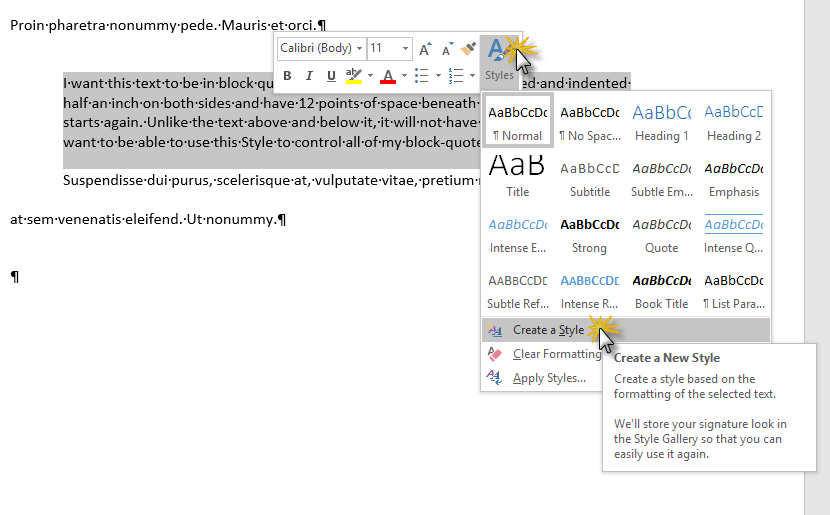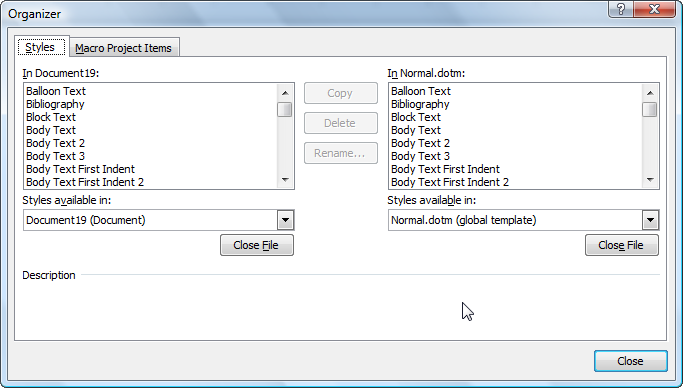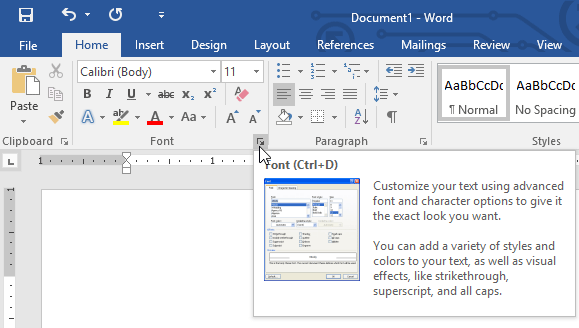

- SHOW STYLES IN WORD 2016 HOW TO
- SHOW STYLES IN WORD 2016 UPDATE
- SHOW STYLES IN WORD 2016 PC
- SHOW STYLES IN WORD 2016 PROFESSIONAL
So how did I do this? While unused Styles can be removed manually, it can get both tedious (as in my case), and dangerous to the formatting of your document if you remove the wrong ones. More after the jump! Continue reading below↓įree and Premium members see fewer ads! Sign up and log-in today.įigure 1: The pane on the left shows the 16 Styles In Use in my document, while the pane on the right is set to show All Styles in the entire document, which totals over 300! Once I removed all unused styles, the spinning ball disappeared, and my work sped up immensely. Upon close investigation, I noticed that although I was only using 16 styles, there were over 300 of them listed in the Styles pane, resulting in a bloated document and very sluggish performance. When I opened any document, or went from one to the next to shift content around, I’d get the dreaded ‘spinning beach ball’ that took no less than 45 seconds to stop each time – unbelievably exasperating! My publisher sent me the previous Word manuscript consisting of 14 separate documents.
SHOW STYLES IN WORD 2016 PROFESSIONAL
Case in point: I’m working on the 4th edition of my book, Type Rules! The designer’s guide to professional typography. So when and why would you need to remove styles? A common occurrence is ‘inheriting’ a document cluttered with unused styles, which can slow down both your own and your software’s performance. In fact, many editors and publishers require a highly “styled” Word document to define the typographic elements. This is especially useful when creating manuscript for lengthy content such as books and reference material, which can contain dozens, if not hundreds of categories and subcategories of styles. Styles in Microsoft Word are similar to those in design applications in that they allow you to create and apply consistent formatting to text. Yes there is, and it can be a real time-saver in certain situations. Is there a way to remove unused Styles from a Word document?Ī.

SHOW STYLES IN WORD 2016 UPDATE
This allows you to quickly update your table of contents (either the whole thing or just the page numbers) after making amendments to your document.Q.
SHOW STYLES IN WORD 2016 PC
Click on one of the options in the “Table of Contents” menu.īoth Mac and PC versions of MS Word feature an “Update” or “Update Table” button next to the “Table of Contents” menu.On Mac, the process is slightly different: If you want to customize your table of contents, click “Custom Table of Contents” instead. This will create an automatic table of contents (including a title saying “Contents”) using the first three “Heading” styles. Place the cursor where you want your table of contents to appear.Once you’ve formatted your headings and subheadings, it’s time to create a table of contents. Thank you for subscribing to our newsletter! Creating Your Table of Contents For example, each chapter heading could be formatted using “Heading 1” and an 18pt font, while subheadings could use “Heading 2” and a 16pt font.

You can do this by using a different “Heading” style for each level. It’s often a good idea to distinguish between different headings and subheadings. If you change the “Heading” style after this, all the headings that use this style will be updated automatically. To apply customized headings, go through each heading and subheading in your paper and click the required style.
SHOW STYLES IN WORD 2016 HOW TO
However, there’s an easier way: Use Microsoft Word’s “Style” options to create a table of contents that can be updated at the click of a button! How to Modify Styles

If you like doing things the slow way, you could type this out manually and painstakingly modify it every time you make a slight change to a subheading. Whenever you write a longer paper, particularly a thesis or dissertation, you’ll need to include a table of contents. How to Create a Dynamic Table of Contents in Microsoft Word


 0 kommentar(er)
0 kommentar(er)
